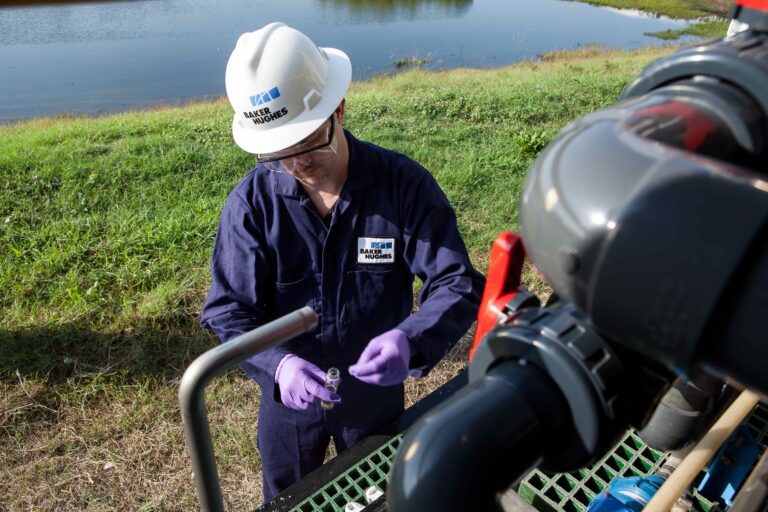7 Best AI Tools For Gardeners
Understanding AI in Gardening
Recent advances in technology have poised artificial intelligence (AI) to enhance the efficiency and effectiveness of gardening practices. AI encompasses a range of tools that not only aid in garden design but also in the ongoing maintenance and decision-making processes for gardeners.
Fundamentals of AI Technology
At its core, AI technology involves the simulation of human intelligence processes by machines, specifically computers. It relies on disciplines such as computer science, biology, psychology, linguistics, mathematics, and engineering. The cornerstone of AI is machine learning, wherein algorithms analyze data, learn from it, and then apply what they’ve learned to make informed decisions. When AI is applied to gardening, it processes vast amounts of information related to plant species, soil conditions, climate data, and more to guide gardeners in their cultivation practices.
AI’s Role in Modern Gardening
In the realm of gardening, AI has become an invaluable ally for both novice and professional gardeners. It assists in several aspects:
- Plant Health: Through continuous monitoring, AI-powered tools can detect plant diseases, pests, and nutrient deficiencies, offering timely interventions.
- Irrigation: AI systems can regulate water usage based on weather data and soil moisture levels, promoting water conservation.
- Yield Prediction: By analyzing past data, AI can predict future plant behavior and potential yields, helping gardeners plan better.
- Personalized Recommendations: Gardeners receive customized advice on plant care, tailored to their garden’s specific requirements and the local environment.
By implementing AI in gardening, individuals can expect a transformation in traditional practices, leading to more fruitful and sustainable outcomes.
Designing Your Garden with AI
With advancements in technology, AI-powered tools are transforming the way gardeners and landscape designers conceive and implement their plans. From intricate garden design to smart landscaping solutions facilitated by mobile apps, these resources enhance creativity and efficiency.
AI Garden Design Software
AI Garden Design Software programs utilize artificial intelligence to help users create complex and aesthetically pleasing garden layouts. These tools, such as Rescape AI, provide a platform for generating high-quality, personalized garden designs rapidly. They use data-driven algorithms to offer plant recommendations and styling tips tailored to the specific conditions of the user’s space.
Landscaping with AI
Innovative AI Landscaping techniques leverage AI to project landscape designs onto the physical space, aiding in visualizing the potential outcomes of a landscaping project. This technology allows for the integration of various elements within a design, ensuring that each component harmonizes with the environment for a sustainable and satisfying landscape.
Mobile Apps for Garden Layout
The rise of Mobile Apps for Garden Layout has enabled gardeners to carry a powerful garden planner in their pocket. These applications, such as AIGardenPlanner, provide convenient access to AI image generators and other tools that can suggest the best placement of plants, irrigation systems, and garden features, based on environmental factors and personal preferences.
Optimizing Plant Growth
Achieving optimal plant growth is a multifaceted endeavor that benefits from the precise analysis offered by AI tools. These tools can assess and act upon critical factors such as soil conditions, moisture levels, and sunlight exposure to promote healthy plant development.
AI for Soil Health
Understanding soil health is foundational to plant growth. AI-driven soil sensors can detail the soil composition, including pH levels and nutrient content, to guide gardeners in making informed decisions. By analyzing data on soil moisture and nutrient levels, such technology can advise when to amend the soil to support the specific needs of different plants.
- Soil Sensors: Detect pH, moisture, and nutrients
- Data Analysis: Tailors soil amendments for enhanced health
Sunlight and Water Regulation
Proper sunlight and water are critical to plant survival. AI tools excel in regulating these factors by adjusting smart irrigation systems based on real-time soil moisture data and predicting sunlight exposure with weather analysis algorithms. This ensures that plants receive the exact amount of water and light required for their unique plant care needs.
- Smart Irrigation: Adjusts watering schedules to soil moisture
- Sunlight Analysis: Manages sunlight exposure for optimal growth
Personalized Plant Care
Every plant species has a distinct set of requirements. AI applications can offer personalized plant care by pairing plant compatibility data with environmental conditions to create bespoke care routines. Tailored suggestions on positioning plants for adequate sunlight and suitably timed watering contribute to customized, efficient plant care.
- Tailored Recommendations: Care routines matched to plant compatibility
- Efficient Care: Customized schedules adapt to plant growth needs
AI-Driven Plant Management
AI-driven plant management is transforming the way gardeners approach the challenges of pests, diseases, and crop yield optimization. These tools empower gardeners with precision and intelligence, enhancing their ability to make informed decisions.
Pest and Disease Control
AI-enabled pest detection systems offer early detection and identification of potential pest infestations and plant diseases. These systems use machine learning algorithms to analyze images from garden cameras or drones, comparing them with vast databases for accurate diagnostics. As a result, gardeners can apply pest control measures more effectively, often with reduced need for pesticides.
- Benefits:
- Reduce pesticide use
- Protect plant health through early intervention
Precision in Harvesting
Integrating AI with harvesting tools enables more precise harvesting, ensuring that crops are picked at the optimal time for quality and longevity. Advanced sensors can assess ripeness and quality, resulting in a streamlined picking process that maximizes the value of the harvest.
- Techniques:
- AI-guided robots for selective harvesting
- Ripeness detection through spectral analysis
Crop Yield Analysis
Through crop yield analysis, AI applications process environmental data and plant metrics to predict and improve future yields. By analyzing current and historical data, these tools can make recommendations for optimizing planting strategies and irrigation, leading to more efficient resource use and increased yields.
- Key Functions:
- Forecasting crop productivity
- Advising on optimal planting schedules and density
AI tools not only bring precision to the current season’s tasks but also contribute to long-term sustainability and success for gardeners.
AI Tools for Garden Efficiency
AI tools for garden efficiency leverage advanced technologies to optimize gardening practices. By utilizing AI technology, smart sensors, and IoT, these tools aim to enhance resource management and automate routine tasks.
Smart Gardening Devices
Smart gardening devices embedded with AI technology can greatly simplify garden management. Devices equipped with sensors monitor environmental conditions such as soil moisture, light exposure, and temperature, ensuring plants receive the care they need without guesswork. Efficiency is achieved through precise analytics, which inform gardeners about the optimal times for planting, watering, and harvesting.
Automated Irrigation Systems
Automated irrigation systems are a cornerstone of AI-driven garden efficiency. Using data from smart sensors, these systems can adjust watering schedules and amounts in real-time, catering to the specific hydration needs of different plants. The result is a significant conservation of water and reduced wastage—hallmarks of efficient resource management.
AI for Resource Management
AI for resource management focuses on optimizing the use of various garden resources, from water to nutrients. AI technology and IoT can efficiently manage supply stocks, predict future needs, and even guide the deployment of robots for tasks such as weeding or planting. This automation not only saves time but also minimizes the consumption of inputs, ensuring a sustainable and cost-effective approach to gardening.
AI and Sustainability in Gardening
Artificial Intelligence (AI) has become an integral tool in advancing sustainable gardening practices, optimizing resources, and minimizing waste. These technologies facilitate smarter gardening strategies that benefit both the gardener and the environment.
Sustainable Practices
AI-driven tools are transforming how gardeners approach sustainability. They leverage real-time data to manage water usage more effectively, employing smart irrigation systems that provide plants with the precise amount of water needed, reducing excess use. For instance, using sensors, gardeners can take the guesswork out of irrigation, ensuring efficient resource management and promoting low-maintenance gardens that thrive with minimal intervention.
Reducing Food Waste
In the context of edible gardens, AI plays a pivotal role in reducing food waste by predicting harvest times with greater accuracy. This allows for better planning and distribution, resulting in fewer surplus crops that might otherwise go to waste. AI applications can forecast crop yields which enables gardeners to prepare for the right amount of produce, thus minimizing waste and enhancing the sustainability of food sources.
Sustainability Metrics
AI tools are crucial in tracking and improving various sustainability metrics. These metrics can range from the carbon footprint of a garden to the overall impact on biodiversity. By analyzing data over time, AI provides actionable insights that gardeners can use to make informed decisions about their practices. Such information is invaluable in guiding how to maintain sustainable gardening practices that are both productive and environmentally friendly.
The Future of Gardening with AI
The integration of AI into gardening practices is poised to significantly enhance efficiency and outcomes. It brings precision to the forefront, blending traditional methods with cutting-edge technology for an enriched gardening experience.
Innovations and Trends
AI is increasingly becoming a game-changer in the gardening world, with innovations aimed at reducing manual labor and increasing productivity. Predictive analytics now enable gardeners to foresee plant health issues, climate impacts, and harvest times with higher accuracy. Tools such as AI-driven garden planners are equipped with data collection capabilities that measure soil conditions, water usage, and sunlight exposure, crafting personalized care schedules for plants.
Free AI tools are emerging, promising to democratize access to technology for hobbyists and professionals alike. These tools offer an enhanced gardening experience, guiding users to optimize growth conditions and maximize yields. The progression toward AI also means a shift from traditional gardening methods, allowing for scalable solutions that could play a pivotal role in improving food security globally.
Challenges and Limitations
Despite the precision and potential offered by AI, gardening with this technology is not without its challenges. Data privacy and the cost of advanced systems can be significant limitations for individuals and small-scale operations. Additionally, the reliance on data means that inaccuracies in collection or analysis can lead to suboptimal gardening decisions.
Understanding the local climate and environment is crucial, yet AI systems may not always be sufficiently localized, which can affect their reliability. Advances in AI must address these limitations to ensure that gardeners have not only high-tech tools but also trust and confidence in the recommendations provided by AI. As the technology matures, overcoming these hurdles is essential for AI to truly revolutionize the gardening industry.
Choosing the Right AI Gardening Tools
When selecting AI gardening tools, gardeners should consider several key elements to ensure they choose the best available option for their needs. First and foremost, affordability is a significant factor. A tool should offer cost savings in the long run, either through increased efficiency or lower maintenance costs. It’s essential to look for tools that provide a good balance between upfront investment and long-term value.
Ease of use is another critical consideration. Tools should have an intuitive interface that is accessible to gardeners of all skill levels. Personalization features can also enhance the user experience, allowing for adjustments based on specific gardening goals or environmental conditions.
The choice of AI tool often depends on the gardener’s primary tasks. For landscape designers, AI tools with advanced visualization capabilities can be particularly beneficial. Here’s a brief guide to help determine suitable tools:
- For Plant Identification: Look for AI apps that offer quick and accurate plant recognition to aid in the care and management of different species.
- For Garden Planning: Choose AI software that can analyze climatic data and soil conditions to suggest optimal plant placements.
- For Monitoring and Maintenance: Consider tools that automate irrigation and nutrient delivery personalized to each plant’s needs.
Finally, selecting tools from reputable companies with strong customer support should be a priority. This ensures that users receive assistance when needed and can easily access updates and improvements to the software.
Here is a simplified decision matrix to guide the choice of AI gardening tools:
| Feature | Importance | Description |
|---|---|---|
| affordability | High | Tools should offer long-term financial benefits. |
| ease of use | High | Intuitive interfaces without steep learning curves are key. |
| personalization | Medium | Custom settings can optimize garden care. |
| customer support | Medium | Reliable support ensures continuous, trouble-free use. |
By carefully weighing these factors, gardeners can confidently select the AI tools that best meet their unique gardening needs.
Frequently Asked Questions
In this section, readers will find common inquiries about integrating AI into their gardening practices, uncovering the technological benefits and discovering popular tools for a more efficient and fruitful gardening experience.
How do you integrate artificial intelligence into garden planning?
Gardeners can integrate artificial intelligence into their planning by using tools like AI Garden Planner that offer data-driven guidance. These systems analyze environmental variables and suggest optimal plant choices and layouts for individual gardens.
What are the advantages of using artificial intelligence in garden design?
Artificial intelligence in garden design streamlines the decision-making process, offering personalized plant recommendations and efficient water management through precision irrigation techniques, thereby enhancing both the beauty and productivity of gardens.
Which AI garden design app is most popular among gardeners?
Although popularity can fluctuate, applications like AIGardenPlanner have been well-received for their comprehensive features, including AI-driven customization and planning tools tailored to gardeners’ specific needs.
Can artificial intelligence help in selecting the right plants for my garden?
Yes, AI can significantly assist gardeners in selecting the right plants by processing external data such as soil type, climate conditions, and sunlight exposure to provide informed suggestions for their garden.
How does Glowbot Garden utilize AI to assist gardeners?
Currently, there is no direct information about a tool called Glowbot Garden. However, similar AI gardening solutions analyze sensor data to offer insights into plant care, much like how precision irrigation is used to optimize water usage.
What features should I look for in a free online AI garden planner?
When choosing a free online AI garden planner, look for features such as ease of use, customizable design options, plant databases, environmental condition analysis, and the ability to deliver actionable insights, which can be instrumental in creating a thriving garden.






